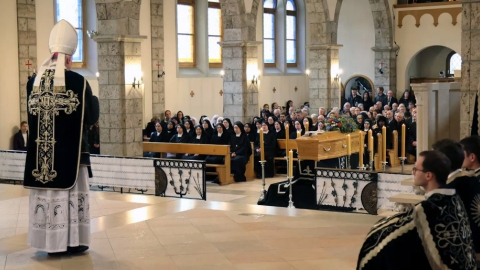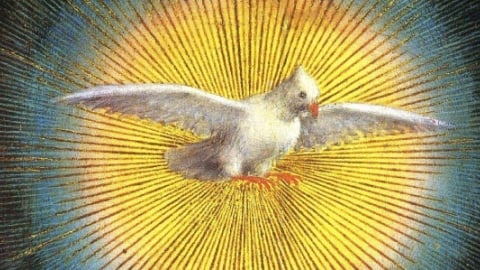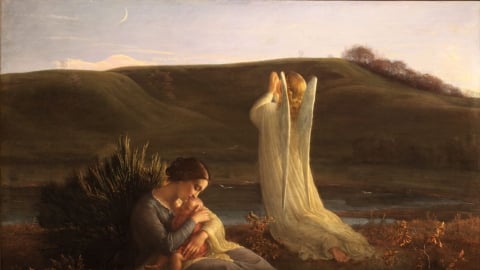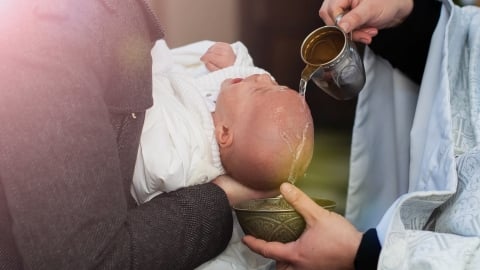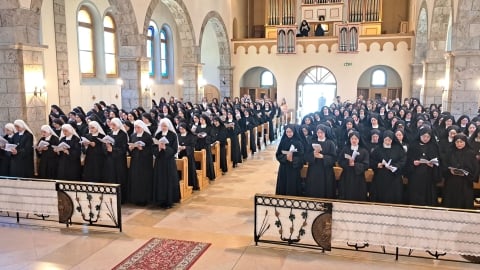Thieves Broke into an English Castle, Lifting Mary, Queen of Scots’ Rosary

The rosary beads and bible belonging to Mary Queen of Scots (1542-1587) on display at Arundel Castle. (Image credit: RDImages/Epics/Getty Images)
Police in Sussex, England are seeking information regarding the May 21st heist of artistic and historic treasures, including a rosary and bible which once belonged to Mary, Queen of Scots.
The thieves snuck into 1,000-year-old Arundel Castle through a window, and smashed a glass display case holding the items, leaving the scene within minutes. They also made away with several coronation cups given by the Sovereign to the Earl Marshal of the day, as well as some smaller gold and silver artifacts. All told, the items stolen are valued at $1.4 million, even though the object of most publicity, Queen Mary’s rosary, is of little value itself.
A spokesman for Arundel Castle Trustees said, “The stolen items … have immeasurably greater and priceless historical importance. We therefore urge anyone with information to come forward to the police to assist them in returning these treasures back where they belong.”
Peter Squires, a criminologist at the University of Brighton, told BBC News that the culprits might have a difficult time selling such recognizable goods. James Ratcliffe, director of recoveries at the Art Loss Register, a database of stolen art, says that in the “worst case scenario,” the thieves might try to melt the items to sell as raw materials. But this action is unlikely since the raw material value would pale in comparison to the value unscrupulous collectors – relatively easy to find in the darker corners of the internet – would pay for the artifact itself.
The rosary stolen in the heist is significant to Catholics – it was carried by Mary Stuart to her death before her brutal execution, and thus symbolizes her steadfastness to the Faith even as the men around her attempted to force her to convert to Protestantism. It is not clear how the rosary ended up in Arundel Castle, since most of Mary’s clothes and belongings were burned to prevent underground English Catholics from keeping them as souvenirs or relics. In fact, the authorities went so far as to remove her heart from her body after her death, burying it in an unmarked location.

Mary, though compromising on key differences between Protestants and Catholics during her time as ruler of Scotland, never renounced her faith, and as such was made to endure an 18-month imprisonment before her execution at the hand of her jealous cousin, Elizabeth I. Due to this imprisonment, execution, and her echo of Our Lord’s words just before her execution – ‘into thy hands, O Lord, I commend my spirit’ – Mary was popularly considered a Catholic martyr almost immediately by the Catholic resistance in England.
A contemporary account by Robert Wynkfield described what he remembered of the events following the execution:
Then Mr. Dean [Dr. Fletcher, Dean of Peterborough] said with a loud voice, 'So perish all the Queen's enemies', and afterwards the Earl of Kent came to the dead body, and standing over it, with a loud voice said, 'Such end of all the Queen's and the Gospel's enemies.'
Then one of the executioners, pulling off her garters, espied her little dog which was crept under her cloths, which could not be gotten forth by force, yet afterward would not depart from the dead corpse, but came and lay between her head and her shoulders, which being imbrued with her blood was carried away and washed, as all things else were that had any blood was either burned or washed clean, and the executioners sent away with money for their fees, not having any one thing that belonged unto her. And so, every man being commanded out of the hall, except the sheriff and his men, she was carried by them up into a great chamber lying ready for the surgeons to embalm her.
After Mary’s body was embalmed it was taken to Peterborough Cathedral, but was exhumed on the orders of her son James VI (I) and she was reburied in the Henry VII Chapel at Westminster Abbey.
Sources: Artnet, BBC, History Scotland, sspx.org - 05/25/2021
